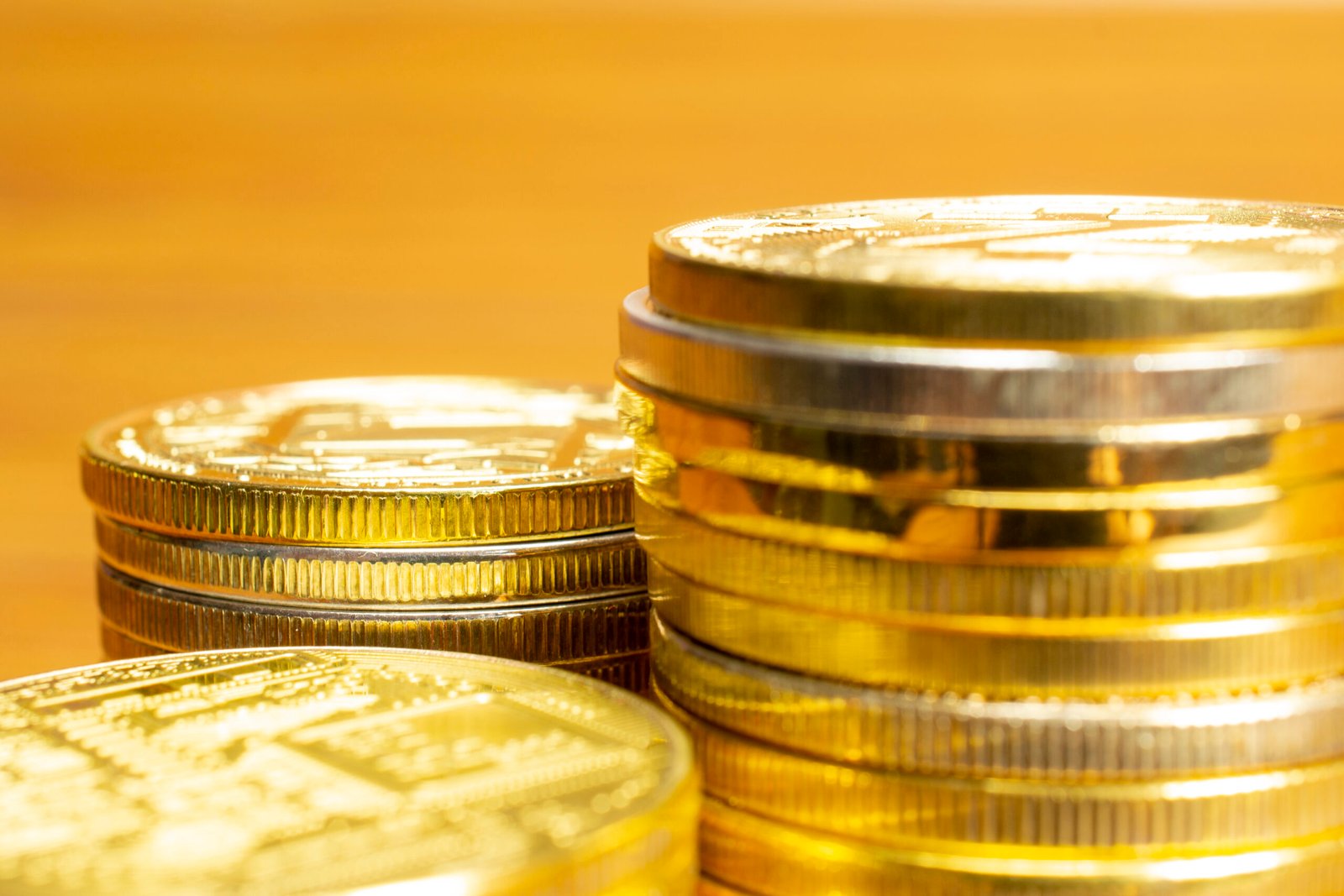Investing in gold and precious metals has been a long-standing strategy for individuals seeking to diversify their portfolio, hedge against inflation, and protect their wealth during economic uncertainties. These commodities, including gold, silver, platinum, and palladium, have intrinsic value that stands the test of time. As financial markets fluctuate, many turn to investing in gold and precious metals to preserve their assets and maintain financial stability.
In this article, we will dive into how to invest in gold and other precious metals, exploring various methods, strategies, and the pros and cons of each approach. By the end, you’ll have a solid understanding of how to incorporate precious metals into your investment portfolio.
Why Invest in Gold and Precious Metals?
Before delving into the specifics of how to invest in gold and precious metals, it’s essential to understand why these assets are so attractive to investors. Historically, gold and precious metals have served as stores of value and a hedge against inflation and currency devaluation.
1. Hedge Against Inflation
One of the main reasons investors turn to gold and other precious metals is to protect their portfolios against inflation. Unlike paper currencies, which can lose value due to inflation, gold’s value tends to rise during inflationary periods. This makes it an excellent hedge against the diminishing purchasing power of fiat money.
2. Portfolio Diversification
Diversifying a portfolio reduces overall risk by spreading investments across different asset classes. Precious metals typically have a low correlation with traditional assets like stocks and bonds, meaning they may perform well when other parts of your portfolio struggle. By investing in gold and precious metals, you add a layer of diversification that can help smooth returns in volatile markets.
3. Safe Haven in Times of Crisis
Gold and other precious metals are often considered “safe haven” assets during economic and geopolitical crises. Investors flock to these assets when uncertainty looms in the global markets, such as during a financial crash, political instability, or a global pandemic. Owning gold can provide peace of mind when other asset classes are underperforming.
4. Long-Term Store of Value
Gold has been used as a store of value for thousands of years. Unlike fiat currencies, which can lose value due to monetary policy changes or inflation, gold retains its purchasing power over time. This makes it a reliable long-term investment, especially for those looking to protect their wealth for future generations.

Ways to Invest in Gold and Precious Metals
There are several ways to invest in gold and precious metals, ranging from purchasing physical bullion to investing in stocks of mining companies. Each method has its advantages and risks, and the right choice depends on your financial goals, risk tolerance, and investment horizon.
1. Physical Gold and Precious Metals
One of the most straightforward ways to invest in gold and other precious metals is by purchasing the physical asset itself. This can include gold coins, bars, or jewelry. Investing in physical metals offers a tangible sense of ownership and the security of holding the asset in your hands.
Pros:
- Tangible asset: You physically own the metal, which can be stored in a secure location like a safe or bank vault.
- No counterparty risk: There’s no reliance on third parties, such as financial institutions, for the value of your investment.
- Liquidity: Physical gold and silver can easily be bought and sold in global markets.
Cons:
- Storage and insurance: You’ll need a secure place to store physical metals, and insurance may be necessary to protect against theft or damage.
- Liquidity concerns: While gold is liquid, selling physical gold might take time depending on where and how you store it.
- High premiums: Physical gold often comes with premiums over the spot price, which can reduce profitability.
2. Gold and Silver ETFs
For investors who prefer not to hold physical gold, exchange-traded funds (ETFs) offer a convenient and cost-effective way to invest in precious metals. Gold and silver ETFs are investment funds that track the price of the metal without requiring investors to purchase, store, or insure the physical asset.
Pros:
- Easy access: ETFs can be bought and sold on stock exchanges just like shares of stock.
- No storage or insurance costs: Since you don’t own the physical metal, you avoid the expenses associated with storage and insurance.
- Liquidity: ETFs are highly liquid and can be traded throughout the day at market prices.
Cons:
- No physical ownership: You don’t own the actual metal, just a share in a fund that tracks its price.
- Management fees: Some ETFs charge management fees, which can erode returns over time.
- Counterparty risk: There’s a small risk that the institution managing the ETF could face financial difficulties, although this is rare with reputable funds.
3. Mining Stocks
Investing in mining companies is another way to gain exposure to gold and precious metals. By purchasing shares in companies that mine for gold, silver, or other metals, you can benefit from both rising metal prices and the success of the company.
Pros:
- Leverage on gold prices: Mining stocks can offer significant leverage to gold prices. If gold prices rise, mining companies can become highly profitable, leading to outsized returns for investors.
- Potential dividends: Some mining companies pay dividends, providing regular income to investors.
- Diversification: By investing in different mining companies, you can diversify your exposure to various metals and geographical regions.
Cons:
- Operational risk: Mining stocks are subject to risks specific to the industry, such as labor strikes, equipment failures, and regulatory changes.
- Volatility: Mining stocks can be more volatile than the metals themselves, meaning they may experience larger price swings.
- Management risk: Poor management decisions or financial mismanagement can negatively impact a company’s performance, even if gold prices rise.
4. Precious Metals Mutual Funds and ETFs
In addition to ETFs that track the price of gold, there are also mutual funds and ETFs that invest in a portfolio of mining companies. These funds provide diversified exposure to the precious metals sector and are managed by professional portfolio managers.
Pros:
- Diversification: Investing in a fund gives you exposure to multiple mining companies, reducing the risk associated with any single company.
- Professional management: Fund managers actively select and manage the investments, which can provide better returns than individual stock-picking.
- Lower volatility: Because these funds invest in a variety of companies, they tend to be less volatile than individual mining stocks.
Cons:
- Management fees: Like all actively managed funds, precious metals mutual funds charge fees that can eat into returns.
- No physical ownership: As with ETFs, you don’t own the physical metals, only shares in a fund that invests in mining companies.
5. Gold Futures and Options
For more advanced investors, futures and options contracts provide a way to speculate on the future price of gold and other precious metals. Gold futures allow investors to buy or sell gold at a predetermined price at a future date, while options contracts give the investor the right, but not the obligation, to buy or sell gold at a set price before a specified expiration date.
Pros:
- Leverage: Futures and options contracts allow investors to control large amounts of gold with a relatively small investment, amplifying potential profits.
- Hedging: Futures and options can be used to hedge against price movements in the underlying metal, protecting against losses in other parts of your portfolio.
Cons:
- High risk: Leverage can magnify losses as well as gains, making futures and options contracts highly risky for inexperienced investors.
- Complexity: These investment vehicles require a deep understanding of market dynamics and the ability to manage risks effectively.
- Potential for large losses: If the market moves against you, losses can exceed your initial investment.

Key Considerations Before Investing in Gold and Precious Metals
While investing in gold and precious metals can be a lucrative strategy, it’s important to consider your financial goals, risk tolerance, and investment horizon. Here are a few key factors to keep in mind:
1. Your Investment Goals
Before investing in precious metals, define your investment objectives. Are you looking to protect your wealth during economic downturns, generate income, or achieve long-term growth? Your goals will determine the best way to incorporate gold and other precious metals into your portfolio.
2. Risk Tolerance
Precious metals can be volatile, particularly during short-term market fluctuations. Determine how much risk you’re willing to take on and allocate your investments accordingly. For those with low risk tolerance, a small allocation to gold ETFs or physical bullion may be appropriate, while more aggressive investors might consider mining stocks or futures contracts.
3. Investment Horizon
Consider your investment timeline when adding gold and precious metals to your portfolio. If you’re investing for the long term, physical gold, ETFs, and mining stocks may be a better fit. Short-term traders might prefer futures and options, but they come with higher risk.
4. Costs and Fees
Each method of investing in precious metals comes with its own set of costs and fees. Physical gold requires storage and insurance, while ETFs and mutual funds charge management fees. Be sure to factor these costs into your investment decision.
Conclusion
Investing in gold and precious metals can provide a solid foundation for long-term wealth preservation, portfolio diversification, and protection against inflation and economic instability. With various options available, from physical gold to ETFs, mining stocks, and futures contracts, investors have numerous strategies to choose from based on their goals, risk tolerance, and expertise.







Top Funds for Investing in Gold - Investsu
setembro 6, 2024[…] Investing in gold is a popular strategy for diversifying your investment portfolio and safeguarding against economic uncertainties. Gold funds offer a convenient way to gain exposure to this precious metal without the need to buy physical gold. This guide explores the top funds for investing in gold, providing insights into their benefits, features, and how to choose the best ones for your investment strategy. […]